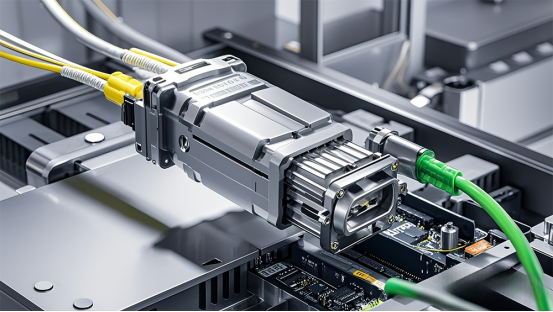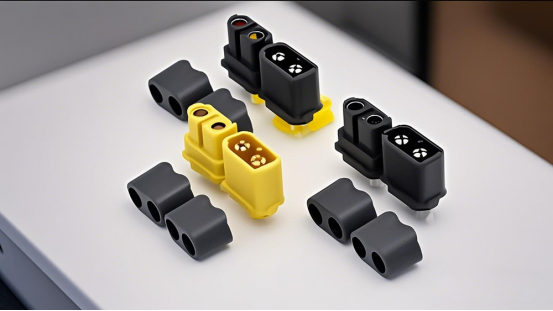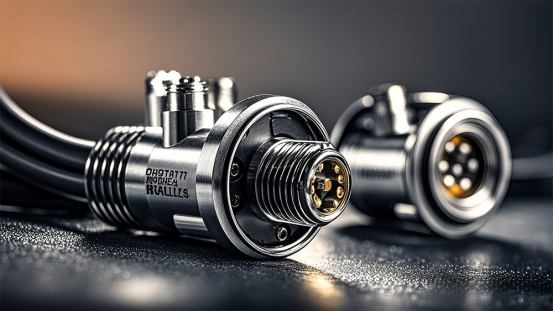Contents
- Key Takeaways
- Part 1: What Are Battery Connectors and Their Importance?
- Part 2: Types of Battery Connectors by Functionality
- Part 3: Industry-Specific Applications of Battery Connectors
- Part 4: Factors to Consider When Choosing Battery Connectors
- Part 5: Tips for Selecting the Right Battery Connector
- FAQ

Battery connectors play a vital role in ensuring efficient energy transfer between batteries and systems. You rely on these components to maintain consistent electrical contact, which directly impacts performance and safety. Modern designs handle high power loads while minimizing energy loss, making them indispensable for advanced applications like electric vehicles and renewable energy systems. Features such as anti-corrosion coatings and lightweight materials enhance durability and efficiency. By integrating safety mechanisms, battery connectors prevent mismatched connections, ensuring secure and reliable operation in demanding environments.
Key Takeaways
-
Battery connectors help move energy well and keep systems safe. -
Picking good connectors reduces energy waste and makes batteries last longer. -
Think about the environment when choosing connectors for strength and dependability. -
Various connectors work for certain uses; pick what fits your system. -
Choose connectors that meet safety rules and work properly.
Part 1: What Are Battery Connectors and Their Importance?
1.1 Definition and Purpose of Battery Connectors
A battery connector is a specialized device designed to establish a secure electrical connection between a battery and its corresponding system. It ensures efficient energy transfer while maintaining the safety and reliability of the entire setup. These connectors come in various designs, such as top post, side post, and quick-connect, to suit different applications. Materials like brass, lead, and nickel-plated alloys are commonly used to enhance conductivity and durability.
The primary purpose of a battery connector is to facilitate the seamless flow of electrical current between the positive and negative terminals of a battery. This connection is critical for powering devices, vehicles, or energy storage systems. By using high-quality connectors, you can minimize energy loss, prevent overheating, and extend the lifespan of your battery system.
1.2 Key Features and Benefits of Battery Connectors
Modern battery connectors incorporate advanced features to meet the demands of high-performance environments. For instance, quick-release mechanisms and smart connectors simplify installation and maintenance. Corrosion resistance, temperature tolerance, and moisture resistance ensure reliable operation in harsh conditions.
The benefits of using these connectors are significant:
-
Enhanced Safety: Prevent mismatched connections and reduce the risk of short circuits. -
Improved Efficiency: Minimize energy loss during power transfer. -
Durability: Withstand wear and tear, ensuring long-term performance. -
Versatility: Support various types of batteries, including those used in automotive, marine, and industrial applications.
1.3 Role of Battery Connectors in Battery Systems
Battery connectors play a pivotal role in ensuring the functionality and safety of battery systems. They act as the bridge between the battery terminals and the connected device or system. Properly designed connectors maintain a stable connection, even under high current loads or extreme environmental conditions.
In energy storage systems, connectors are vital for maintaining efficiency and reliability. Industry reports highlight their importance in applications like electric vehicles and renewable energy systems. Advanced designs, such as solid-state and smart connectors, are now being integrated to meet evolving technological demands.
By understanding how to identify battery terminals and selecting the right connector, you can optimize the performance of your battery system. Whether dealing with positive or negative terminals, the right connector ensures a secure and efficient connection, reducing downtime and maintenance costs.
Part 2: Types of Battery Connectors by Functionality
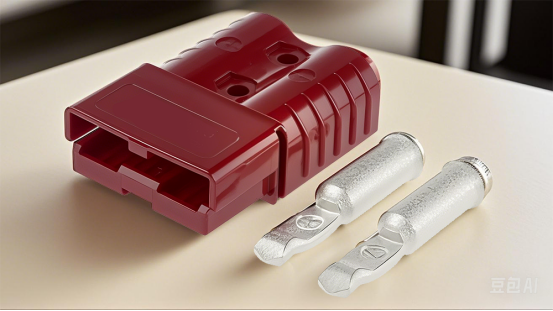
Battery connectors come in various designs, each tailored to specific applications and performance requirements. Understanding the functionality of these connectors helps you select the right one for your system. Below, we explore four key types of battery connectors based on their functionality.
2.1 High-Current Battery Connectors
High-current battery connectors are designed to handle substantial electrical loads, making them ideal for applications requiring significant power transfer. These connectors are commonly used in industrial machinery, electric vehicles, and energy storage systems. Examples include the Anderson Powerpole connectors and XT series connectors (XT30, XT60, XT90).
The Anderson Powerpole connectors are known for their modular design, allowing you to stack multiple connectors for increased versatility. They also feature a genderless design, simplifying installation. Similarly, the XT series connectors are popular for their high current ratings and secure locking mechanisms, ensuring a stable connection even under heavy loads.
When selecting high-current connectors, you should consider their ampacity and material composition. For instance, connectors made from copper or nickel-plated alloys offer excellent conductivity and durability. These features ensure efficient energy transfer and reduce the risk of overheating, enhancing the safety and longevity of your battery system.
2.2 Low-Voltage Battery Connectors
Low-voltage battery connectors are essential for applications where energy efficiency and reliability are critical. These connectors are widely used in electric vehicles, consumer electronics, industrial machinery, and renewable energy systems.
| Application Area | Description |
|---|---|
| Electric Vehicles (EVs) | Low-voltage battery connectors are essential for efficient power transfer in EV systems. |
| Consumer Electronics | These connectors ensure reliable connections in devices, enhancing energy efficiency. |
| Industrial Machinery | They play a critical role in the safe operation of machinery, contributing to overall efficiency. |
| Renewable Energy Systems | Used in solar and wind energy systems, they facilitate effective energy storage and transfer. |
JST connectors and Molex connectors are common examples of low-voltage connectors. JST connectors are compact and lightweight, making them suitable for small devices. Molex connectors, on the other hand, are known for their robust design and secure fit, ensuring stable connections in demanding environments.
2.3 Quick-Disconnect Battery Connectors
Quick-disconnect battery connectors are designed for convenience and ease of use. These connectors allow you to quickly connect or disconnect a battery without the need for tools, making them ideal for applications requiring frequent battery changes.
Deans T-plugs (T-type connectors) and EC series connectors (EC3 and EC5) are popular quick-disconnect options. Deans T-plugs are compact and provide a low-resistance connection, ensuring efficient power transfer. EC connectors, with their bullet-style design, offer a secure and reliable connection, even in high-vibration environments.
These connectors are particularly useful in scenarios where downtime must be minimized. Their user-friendly design reduces installation time and ensures a secure connection, enhancing the overall efficiency of your system.
2.4 Specialized Battery Terminals (Clamp, Ring, Flag, Splice)
Specialized battery terminals are essential components in battery systems, offering unique designs tailored to specific applications. These terminals ensure secure connections and efficient power transfer, making them indispensable in various industries. Understanding the different battery terminal types helps you select the right option for your system’s needs.
Clamp Terminals
Clamp terminals are among the most common battery connector types. They feature a simple design that allows you to attach them directly to battery posts. These terminals are widely used in automotive and industrial applications due to their ease of installation and robust connection. Clamp terminals often include anti-corrosion coatings, ensuring durability in harsh environments.
Ring Terminals
Ring terminals provide a secure and permanent connection by fastening the terminal to a stud or bolt. These terminals are ideal for applications requiring high reliability, such as energy storage systems and industrial machinery. Their design minimizes the risk of accidental disconnection, enhancing safety and performance.
Flag Terminals
Flag terminals are designed for applications where space is limited. Their flat, angled design allows you to connect wires in tight spaces without compromising accessibility. These terminals are commonly used in compact battery systems, such as those found in consumer electronics or renewable energy setups.
Splice Terminals
Splice terminals enable you to join two or more wires securely, ensuring a continuous electrical connection. These terminals are often used in custom wiring setups or repairs, providing flexibility and reliability. Splice terminals are particularly useful in scenarios where standard connectors may not fit or perform adequately.
Tip: When choosing specialized terminals, consider factors like current capacity, material composition, and environmental conditions. High-quality terminals made from materials like copper or nickel-plated alloys ensure better conductivity and longer service life.
By understanding these specialized battery terminal types, you can optimize your battery system’s performance and reliability. Each type serves a distinct purpose, allowing you to address specific application requirements effectively.
Part 3: Industry-Specific Applications of Battery Connectors
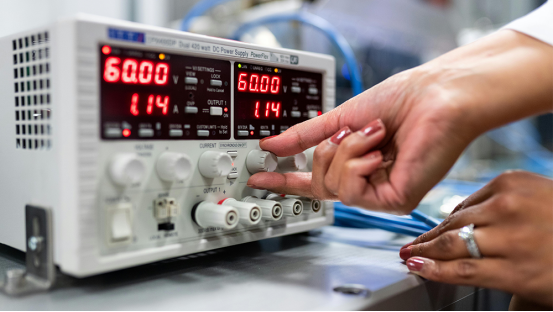
3.1 Medical Applications
Your medical devices demand components that balance precision and reliability—lithium battery connectors deliver exactly that. In portable tools like glucose meters or defibrillators, connectors such as XT series connectors (XT30, XT60, XT90) ensure stable high-current transmission (up to 90A) while resisting vibration. For implantables like pacemakers, ultra-thin designs (<1 mm) maintain performance without compromising comfort.
Safety is paramount: Molex Mini-Fit connectors meet IEC 60601-1 standards, preventing electric risks, while IP67/IP68-rated options (e.g., TE Connectivity DEUTSCH DT) endure sterilization. Flexible circuits enable compact, durable designs for wearables.
In extreme conditions, connectors operate from -55°C to 175°C, critical for sterilization or emergencies.
Tip: Prioritize IEC-compliant safety, match current/voltage requirements, ensure waterproofing (IP67/IP68), verify anti-vibration design, and select ultra-thin options for implantables.
3.2 Marine Applications
Marine environments pose unique challenges for battery connectors, including exposure to moisture, salt, and extreme temperatures. In such conditions, corrosion-resistant connectors are essential to maintain a stable connection. Ring terminals and flag terminals are widely used in marine applications due to their secure fit and compact design.
For high-performance marine systems, connectors like Molex and EC series (EC3, EC5) are ideal. These connectors provide a reliable connection to the positive and negative battery terminals, even in high-vibration environments. Their robust construction ensures they can withstand the harsh conditions of marine operations, reducing the risk of power failure.
Note: Regular maintenance of marine battery connectors is crucial. Inspect and clean the connectors periodically to prevent corrosion and ensure optimal performance.
3.3 Industrial and Energy Storage Applications
Battery connectors are indispensable in industrial machinery and energy storage systems. These applications require connectors that can handle high voltages and currents while maintaining safety and efficiency. Specialized connectors, such as Anderson Powerpole and XT series, are designed to meet these demands.
Battery Energy Storage Systems (BESS) rely on connectors with advanced features like improved conductivity and ease of installation. These connectors enhance safety by minimizing power loss and preventing overheating. Industry reports project a 32.8% compound annual growth rate (CAGR) for the global battery connector market from 2023 to 2030, driven by the increasing adoption of batteries in wind turbines, solar power plants, and telecommunication systems.
The demand for reliable connectors continues to rise as industries prioritize efficiency and safety. By choosing high-quality connectors tailored to your specific needs, you can optimize the performance and longevity of your battery systems.
Part 4: Factors to Consider When Choosing Battery Connectors
4.1 Electrical Requirements (Ampacity, Voltage, Material)
When selecting battery connectors, you must evaluate their electrical specifications to ensure optimal performance and safety. The ampacity, or current-carrying capacity, is a critical factor. A connector must handle the maximum current draw of your application without overheating. For instance, XT series connectors (XT30, XT60, XT90) are designed for high-current applications, offering reliable performance under heavy loads.
Voltage compatibility is equally important. Using connectors rated for the correct voltage prevents electrical arcing and ensures stable power transfer. For low-voltage systems, JST and Molex connectors are excellent choices due to their compact design and reliable connections.
Material selection also plays a vital role. Copper and nickel-plated connectors provide superior conductivity and durability. These materials minimize energy loss and resist wear, extending the lifespan of your battery system. Always match the connector size to the battery terminals and cables to avoid loose connections or inefficiencies.
Tip: Check industry guidelines to ensure your connector meets the current rating, voltage requirements, and material standards for your application.
4.2 Environmental Conditions (Temperature, Moisture, Corrosion)
Battery connectors must withstand environmental challenges to maintain reliability. High temperatures can degrade materials, while moisture and corrosion can compromise connections. For example, nickel-coated connectors excel in humid or corrosive environments, making them ideal for marine or industrial applications.
Standards like ISO 16750-4 test connectors under extreme conditions, including temperature fluctuations and humidity exposure. Anti-corrosion coatings, such as nickel plating, enhance durability in harsh settings. In marine environments, ring terminals and EC series connectors (EC3, EC5) are preferred for their robust construction and resistance to saltwater damage.
Note: Regular maintenance, such as cleaning and inspecting connectors, helps prevent environmental degradation and ensures long-term performance.
4.3 Design and Compatibility (Ease of Use, Standards)
The design of a battery connector significantly impacts its usability and compatibility. Quick-connect designs, like Anderson Powerpole and Deans T-plugs, simplify installation and reduce downtime. These connectors are particularly useful in systems requiring frequent battery changes.
Compatibility with industry standards ensures seamless integration into your system. For example, connectors used in electric vehicles must comply with safety and performance certifications, such as ECE 100 and ISO 16750-1. Additionally, the mechanical lifespan of a connector, measured in connection cycles, determines its durability. High-quality connectors, like XT and Molex series, offer extended lifespans, reducing replacement costs.
Reminder: Always verify that the connector design aligns with your system’s requirements, including battery terminal type and cable size.
Part 5: Tips for Selecting the Right Battery Connector
5.1 Assessing Application-Specific Needs
Selecting the right battery connector begins with understanding your specific application requirements. Each system has unique demands, and choosing a connector that aligns with these needs ensures optimal performance and safety.
Start by evaluating the electrical load of your system. High-current applications, such as industrial machinery or energy storage systems, require connectors like the XT90 or Anderson Powerpole. These connectors handle substantial currents without overheating, ensuring reliable energy transfer. For low-voltage systems, such as consumer electronics, JST or Molex connectors are more suitable due to their compact design and efficiency.
Environmental conditions also play a critical role. Marine applications, for instance, demand connectors resistant to moisture and corrosion. EC3 and EC5 connectors, with their robust construction and anti-corrosion properties, perform well in such environments. Similarly, connectors used in industrial settings must withstand high temperatures and vibrations.
Tip: Always match the connector’s mechanical lifespan to your system’s operational demands. A connector with a higher cycle rating reduces maintenance costs and downtime.
Finally, consider the ease of installation and maintenance. Quick-disconnect connectors, such as Deans T-plugs, simplify battery replacement, saving time in systems requiring frequent changes. By assessing these factors, you can select a connector that meets your system’s specific needs while ensuring long-term reliability.
5.2 Prioritizing Quality and Compliance with Standards
Quality and compliance are non-negotiable when choosing battery connectors. High-quality connectors enhance safety, efficiency, and durability, while compliance with industry standards ensures compatibility and reliability.
Focus on connectors made from premium materials like copper or nickel-plated alloys. These materials offer superior conductivity and resist wear, extending the lifespan of your battery system. For example, Anderson Powerpole connectors are known for their durable construction and high current-carrying capacity, making them a trusted choice in industrial and automotive applications.
Compliance with standards such as ISO 16750-1 and UL 1977 guarantees that the connector meets safety and performance benchmarks. These certifications test connectors under extreme conditions, ensuring they can handle real-world challenges. For instance, XT series connectors (XT30, XT60, XT90) are widely recognized for their adherence to safety standards, making them reliable for high-performance systems.
Note: Substandard connectors may compromise system safety and efficiency. Always verify certifications and request documentation from suppliers to ensure compliance.
By prioritizing quality and compliance, you safeguard your system against failures and inefficiencies. Investing in certified, high-quality connectors reduces risks and enhances the overall performance of your battery-powered systems.
Battery connectors are indispensable for ensuring safe and efficient energy transfer across diverse industries. Selecting the right connector requires careful evaluation of electrical requirements, environmental conditions, and compatibility with battery terminals. Modern connectors, such as XT series, Anderson Powerpole, and Molex, utilize robust materials and advanced designs to enhance performance. Features like anti-looseness mechanisms and thermal-resistant materials improve reliability, while integrated monitoring systems ensure safety in demanding environments.
By choosing high-quality connectors tailored to your specific application, you can optimize system performance and extend the lifespan of your battery setup. This approach minimizes downtime, reduces maintenance costs, and ensures long-term operational efficiency.
FAQ
1. What are the most common types of battery connectors?
The most common types include XT series (XT30, XT60, XT90), Anderson Powerpole, Molex, Deans T-plugs, and EC series (EC3, EC5). Each type serves specific applications, such as high-current systems, compact devices, or quick-disconnect setups.
2. How do I choose the right battery connector for my system?
Evaluate your system’s electrical requirements, environmental conditions, and compatibility. For high-current applications, XT series connectors are ideal. For compact designs, JST or Molex connectors work well. Always match the connector’s ampacity and voltage rating to your system.
3. Why is material selection important for battery connectors?
Materials like copper and nickel-plated alloys offer superior conductivity and durability. They minimize energy loss, resist corrosion, and extend the lifespan of your battery system. Poor-quality materials can lead to overheating and connection failures.
4. Are quick-disconnect connectors reliable for frequent use?
Yes, quick-disconnect connectors like Deans T-plugs and Anderson Powerpole are designed for frequent connections. Their robust construction and secure locking mechanisms ensure reliability and reduce wear, even with repeated use.
5. How can I ensure the safety of my battery connectors?
Choose connectors with certifications like ISO 16750-1 or UL 1977. Regularly inspect and clean connectors to prevent corrosion. Use connectors with anti-looseness mechanisms and ensure they match your system’s mechanical and electrical requirements.


